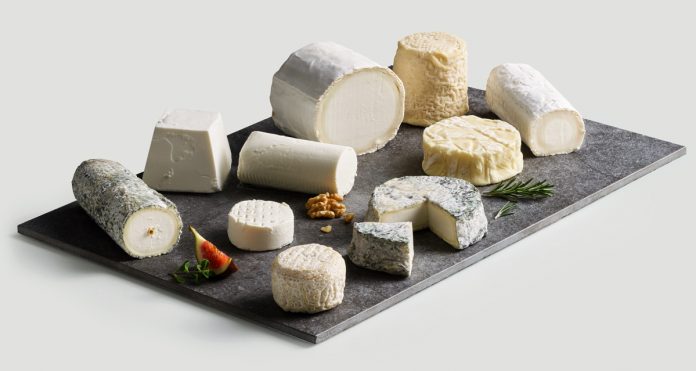
Berlin, Germany (Gastrosofie). In of course France there exists an organization called the Association Nationale Interprofessionnelle Caprine (ANICAP), whose members are primarily goat milk and cheese makers. It is said that they number around 6,000. A „goat milk association“ is mentioned in a press release by a „ff.k Public Relations“, so and not otherwise written limited liability company based in Hamburg from May 28, 2020.
It says that the representative, marketing and advertising agency founded in 1983 represents „all goat milk farmers and goat cheese producers from France“ and that this „France counts hundreds of goat cheese varieties that stand for traditional production and authentic taste“.
„Lets have a look, then we can see“, we thought and eyed a roll and a few rounds of small and tiny cheese patties, even something cylindrical, but if you only get a handful of both free and delicious samples for the press, then you can not expect, see, experience and recognize more. How much would we like to look at infinite angular shapes, gugelhopf shapes, conical shapes and cheese rounds, cylindrical shapes and all sorts of special shapes – to say nothing of the colours! And above all: how thrilling would it be to have a good decent bite of the many, many cheeses!
With only a handful of goat cheese from France, we will not allow ourselves to judge ANICAP, especially not without having had a food technology inspection, but we liked the varieties sent, six in number. Four were covered with a fine noble mould bark and one was dusted with carbon black. Everyone can imagine that there was a wonderful smell of mould and goat cheese in our editorial kitchen. And then the famous and diverse flavours of this delicacy! Fine, aromatic, spicy. Wonderful! We as well as you know that the taste gets more intense with age. Wouldn’t we all like to see, smell and taste different generations of every variety?
All six have the AOP seal. AOP stands for „Appelation d´Origine Protégée“ and means „Protected Designation of Origin“, but the old AOC seal (Appellation d’origine controlée) was good enough. The goat cheese
- Banon
- Chabichou du Poitou
- Charolais
- Chevrotin
- Chavignol
- Mâconnais
- Pélardon
- Picodon
- Pouligny Saint-Pierre
- Rigotte de Condrieu
- Sainte Maure de Touraine
- Selles-sur-Cher
- Rocamadour
- Valençay
are all AOP seal varieties. The Cabri frais nature is a mildly sour cream cheese from Burgundy, which even was tucked in a green leaf. The chabi, derived from the Arabic word for goat, is a soft cheese from the Poitou-Charentes region, province of Vienne. It shows a delicate, whitish to bluish mould formation typical of the variety. Like all cheeses tasted, the fat in the dry matter is 45 per cent. Allergens? No! It, which is known by connoisseurs and critics as Chabichou du Poitou, tastes very sour to nutty, but this variety, which is made from goat’s milk without heating or pressing, mixed with rennet, really depends on the degree of ripeness in terms of taste. The goats usually eat the greens of very calcareous soils. And how you can taste that! Five weeks of ripening are not enough for a strong taste. Of course, its texture also increases with maturity. It can become crumbly. And that’s good!
Sainte Maure, a soft cheese from the province of Indre-et-Loire, has also aged for five weeks. The lactose-free roll, in which goat milk, salt, rennet, ferment, rennet and vegetable charcoal should be put, tastes like hazelnut, somewhat earthy, even sour.
The semi-hard sliced cheese from the Aveyron department is also a success. Tomme de Chèvre this goat cheese is called, which has been matured for two months and is nutty, even caramel-like, and also lactose-free.
Not lactose-free, but with vegetable charcoal, the Selles sur Cher is – correctly – from the province of Chèr. After up to four weeks of ripening, it usually tastes slightly sour, with a tang of hazelnut.
The Crottin de Chavignol, which is also said to come from the province of Chèr, tastes nearly the same and goes extremely well – as connoisseurs know – with a bottle of Sancerre. It needs up to six weeks to mature and which mould formation is said to be variety-typical.
Thanks to the public relations team from Hamburg for their assortment of goat cheese from France. Now we would like to get to know the entire range of cheeses and do some research on site and visit cheese dairies that would all stand for „traditional production“. Who does not want that?!
We may also pay a visit to one or two goats. 1.3 million ruminant mammals also named bovids are supposed to live in the West of France. The choice will take some time!










